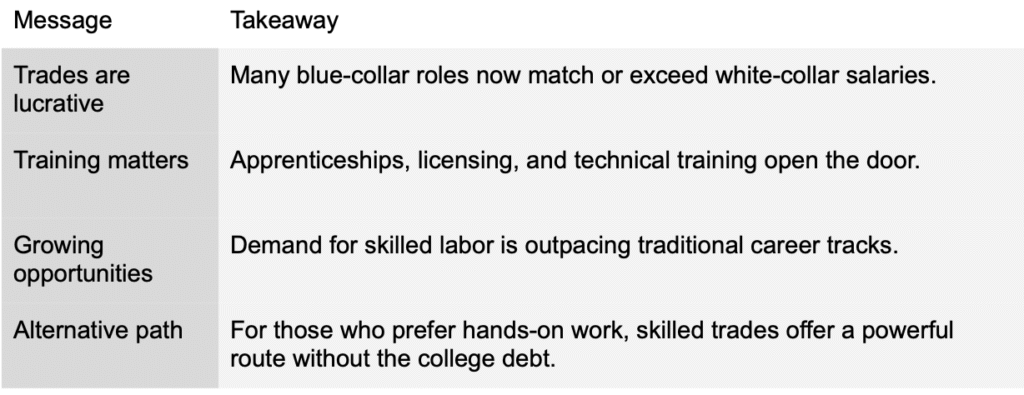In recent years, the pay landscape for skilled trades has shifted dramatically. Traditionally blue‑collar roles—seen as manual and hourly—are now commanding compensation that rivals white‑collar professions. Let’s unpack which high-paying blue collar jobs are breaking the mold, why this shift is happening, and what it means for job seekers.
Top Blue‑Collar Jobs with White‑Collar Pay
1. Elevator Installers & Repairers
-
Median pay: Around $99,000/year
-
Why so high: These workers assemble and maintain complex machinery—motors, cables, controls. The work demands a formal elevator apprenticeship, electrical expertise, and precision.
2. Power Plant Operators, Distributors & Dispatchers
-
Top pay: Nearly $98,000/year
-
Job scoop: Running the guts of our electricity grid—starting turbines, tracking voltage, managing pressure. It’s highly technical, requiring on‑the‑job training and strong mechanical aptitude.
3. Nuclear Power Reactor Operators
-
Frequently ranked among the top 7 blue‑collar roles by The Ladders
-
Salary: Often six figures, due to the immense responsibility and training required to ensure safety and compliance.
4. Air Traffic Controllers
-
Also recognized by The Ladders as a blue‑collar role with white‑collar salary
-
Why the big bucks: Managing multiple aircraft in tight airspace requires razor‑sharp focus and federal certification. Stress is high, but so is compensation.
What’s Driving the Rise in High-Paying Blue-Collar Jobs
-
Labor Shortages & High Demand
-
A growing shortage of electricians, HVAC techs, and other trades is driving pay increases—especially for skilled workers.
-
Gen Z, seeing college as less essential, is gravitating toward these high-paying trades Business Insider.
-
-
Technology and Complexity
-
Automation and new equipment in power plants and infrastructure have made skilled labor more technical.
-
-
Unionized and Apprenticeship Structures
-
Many of these roles (e.g. elevator techs, linemen) are tied to unions, offering structured career ladders and set compensation.
-
-
Changing Corporate Mindset
-
Companies are recognizing value in experience and hands-on expertise. Walmart now says its managers can earn up to $400,000 a year—no college degree required—highlighting how some companies are promoting employees from within and offering high-paying leadership roles without the traditional education path.
-
Beyond the Ladders List: Other High-Earning Trades
-
Locomotive Engineers: Pay: $85K median—running diesel-electric trains and ensuring safety. Training and certification are required
-
Power-Line Installers & Repairers: Pay: $57K average, with opportunities for overtime and union roles to push pay much higher
-
Construction Managers & Inspectors: Often included in expanded blue collar lists; supervisorial roles with salaries approaching $100K+.
The “New Collar” Movement
A Forbes report on “new‑collar” careers found numerous no‑degree occupations paying over $100K in 2025—many overlapping with traditional trades: HVAC, cybersecurity techs, cloud specialists, etc. These roles focus on skills over school, lining up perfectly with the shift from standard blue-collar to high-dollar.
What This Means for Job Seekers
-
Shorter training cycles: Apprenticeships and certificates can cost a fraction of college and take far less time.
-
High demand = higher bargaining power: Skilled trades are only growing more essential.
-
Transition potential: Many trade roles can evolve into supervisory, technical, or consulting white-collar positions.
-
Balance of risk and reward: These high-paying blue collar jobs often involve physical labor, safety hazards, or irregular hours, but are balanced by stability and pay.
Final Takeaways

Reflect & Explore
Are high-paying blue-collar jobs starting to look a little different to you now? Whether you’re exploring a new path or just rethinking what success can look like, it’s worth considering where skill, stability, and opportunity meet.




